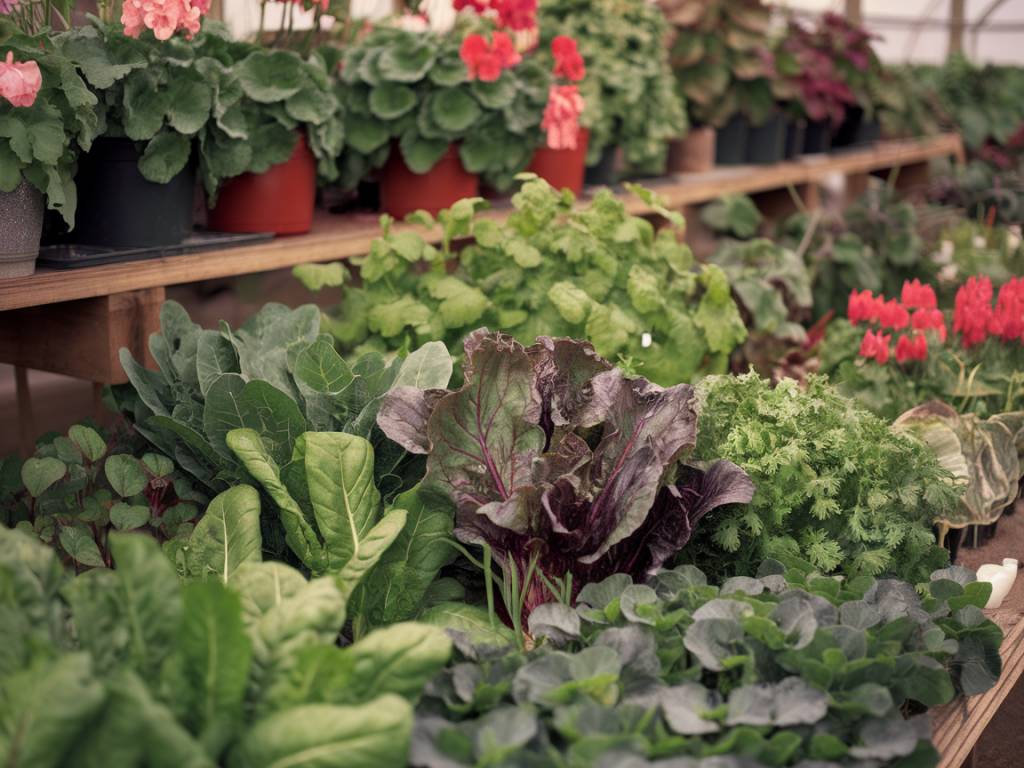As winter envelops the UK, many gardeners tuck away their tools, dreaming of spring. But for those of us keen on cultivating fresh produce year-round, the greenhouse becomes a haven. Winter greenhouse gardening offers unique rewards, allowing us to grow a variety of vegetables and herbs despite the cold. Today, I’ll share some insights and tips on how to make the most of your winter greenhouse, ensuring you enjoy a bountiful harvest even in the chilliest months.
Choosing the Right Plants for Winter
The key to successful winter greenhouse gardening lies in selecting cold-tolerant crops. Not all plants are suited to lower temperatures, but there are several that thrive in the cool, crisp air of a winter greenhouse. Here are some excellent choices:
By selecting plants bred for winter growth, you’ll ensure a steady supply of fresh produce, no matter how cold it gets outside.
Providing Adequate Light
Winter days in the UK are notoriously short, which means natural daylight might not be sufficient for all your plants. To supplement this, consider installing grow lights in your greenhouse. Look for LEDs, which are energy-efficient and produce the full spectrum of light needed for plant growth. It’s best to position the lights close to the plants, and keep them on for about 10-12 hours a day to mimic natural sunlight.
Maintaining Optimal Temperature
Keeping your greenhouse warm enough during winter can be a challenge, but it’s certainly manageable with some thoughtful strategies. Firstly, ensure your greenhouse is well-insulated. Drafts and gaps can allow precious warmth to escape, so seal any openings and consider using bubble wrap on the inside of your greenhouse to provide an extra layer of insulation.
To maintain a steady temperature, invest in a greenhouse heater. There are various types available, such as electric, propane, or paraffin heaters. Choose one that suits your greenhouse size and budget. Remember to monitor the temperature regularly. A heat mat under trays of seedlings can provide localized warmth and promote better growth. Additionally, using thermal mass, such as water barrels painted black, can store daytime heat and release it slowly during the night.
Proper Ventilation
While keeping your greenhouse warm is crucial, proper ventilation is equally important. Humidity can build up quickly in a greenhouse, leading to mold and disease. Regularly opening vents and doors for short periods can help regulate humidity levels and ensure a steady supply of fresh air. Automatic vent openers are a handy solution, as they can open and close vents based on the internal temperature, reducing the need for manual adjustments.
Watering Wisely
Watering in winter requires a delicate balance. Overwatering can lead to root rot, especially since evaporation rates are lower during colder months. On the other hand, under-watering can stress plants and stunt their growth. Water in the morning to allow excess moisture to evaporate during the day. Ensure the soil is well-drained, and consider using self-watering systems to maintain consistent moisture levels without the risk of overwatering.
Utilising Mulch Effectively
Mulching isn’t just a summer activity; it can be incredibly beneficial during winter as well. A layer of organic mulch, such as straw, leaves, or compost, can help retain soil moisture and regulate temperature. It acts as insulation, keeping the soil warmer than the ambient air in the greenhouse. Additionally, mulch suppresses weeds, which can still be an issue even in winter.
Plant Care and Monitoring
Regularly checking on your plants is vital to successful winter greenhouse gardening. Look for signs of pests and diseases, which can spread rapidly in an enclosed environment. Aphids and whiteflies are common greenhouse pests; use insecticidal soap or neem oil to keep them at bay. Additionally, cleaning your greenhouse between planting cycles can minimize pest and disease risks.
Also, be mindful of nutritional needs. While plants grow more slowly in winter, they still require essential nutrients to thrive. Use a balanced, organic fertilizer to provide a steady supply of nutrients, and consider conducting a soil test to adjust pH levels if necessary.
Embracing Crop Rotation
Even in a greenhouse, crop rotation remains a beneficial practice. Rotating crops helps prevent soil depletion and reduces the chance of diseases and pests becoming established in the soil. Plan your greenhouse layout to ensure that no single plant family occupies the same location season after season. This practice promotes healthier soil and more robust plant growth.
Maximising Space
Space in a greenhouse is often limited, so it’s important to maximize it efficiently. Vertical gardening techniques, such as trellising and using shelves, can help you make the most of the available space. Hanging baskets are another option for growing plants without sacrificing ground space. Companion planting can also be beneficial, where compatible plants are grown close together to make efficient use of the soil and light.
Harvesting During Winter
One of the most satisfying aspects of winter greenhouse gardening is the ability to harvest fresh produce when outdoor gardens lie dormant. Harvest leafy greens regularly to encourage new growth. Root vegetables can be pulled as needed, but leaving them in the soil can sometimes enhance their flavor. Monitor your plants and harvest them when they reach their peak to enjoy the best flavors and nutrients.
I hope you’re inspired to embark on your own winter greenhouse gardening journey. There’s something profoundly rewarding about growing your own food, especially during the colder months. Embrace the challenges and joys of winter gardening, and you’ll be rewarded with fresh produce and a deeper connection to the natural rhythms of the seasons.
With love and happy gardening,
Samanta
